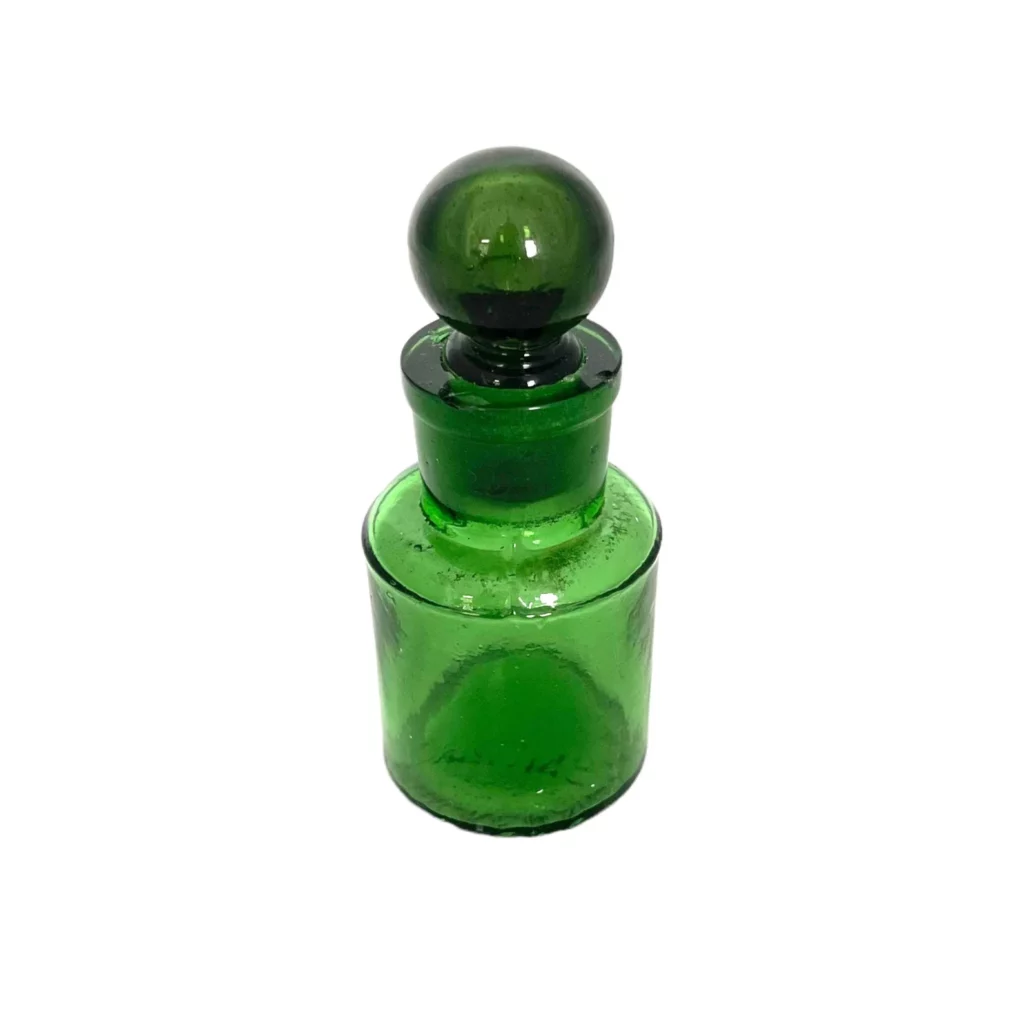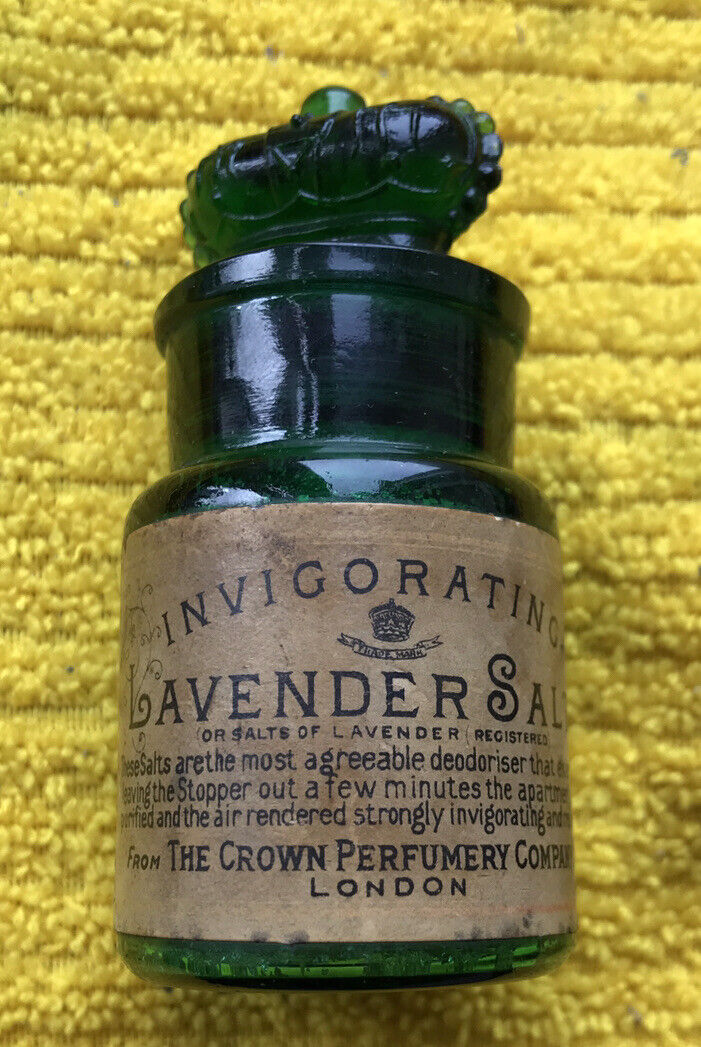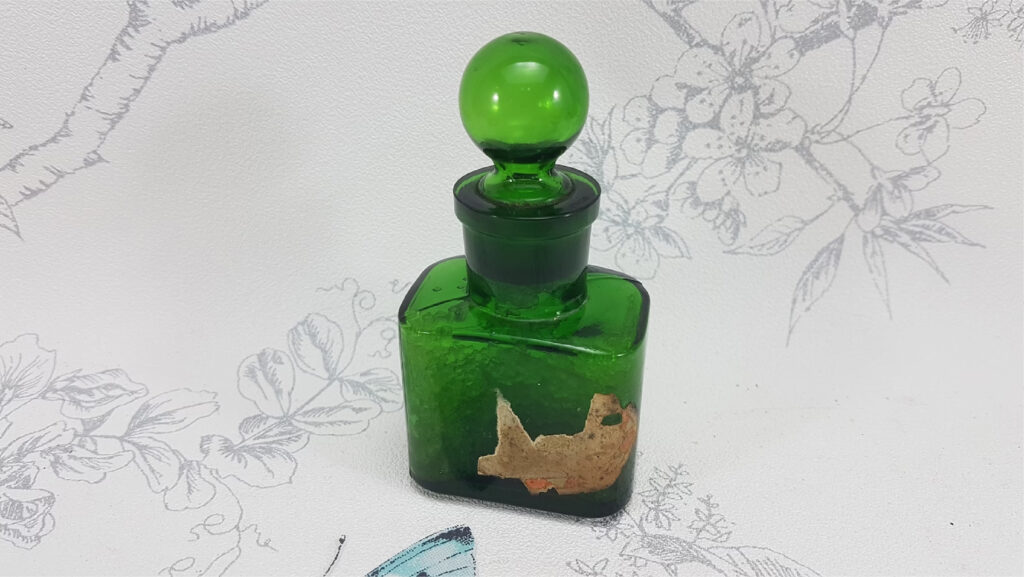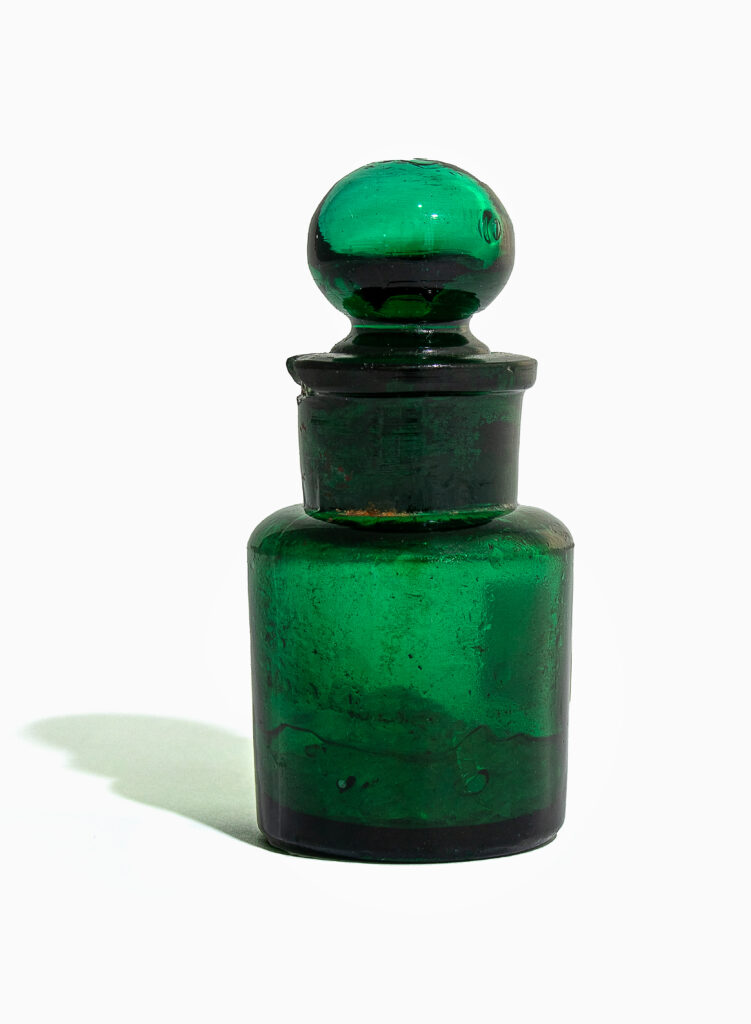Unseen Object Smelling Salt Bottle
Our unseen object for this month’s blog post is a small green bottle containing smell salts. The green glass design, as well as other similar ones, was used by pharmacists from the late 19th century to the early 20th century. A pharmacist during the early 1900s would have used a glass bottle such as this to store scented-smelling salts. A popular scent used during this time was lavender. Lavender has a long history of being used for its medicinal effects, so naturally, apothecaries would begin to use this herb when making medicines.



Queen Victoria’s interest in English lavender also helped shape the choice of scent used for smelling salts. It was during Victorian Britain when smelling salts became in vogue and were widely used. They were partly being used to revive fainting women, suffering from the restrictions of corsets. The public believed it to be such an issue, in places police constables would carry a container of smelling salt.
Women throughout this time carried their smelling salts in a decorative container called a vinaigrette. Society saw these containers as a status symbol, like a watch or handbag. Our smelling salt bottle was more used for storage than decorative display. Most likely made using a two-piece post-bottom mould. This can be seen by its side seam and raised base. The bottom of the bottle also has a visible seam, another sign that it was made with a post-bottom mould. Used throughout the 1840s to early 1900s, this was the dominant type of mould used to make a wide range of bottles. The main body of this bottle was blown first, with the neck and top added after the body was made. We can tell this by the seam ending on the bottle’s shoulder.








